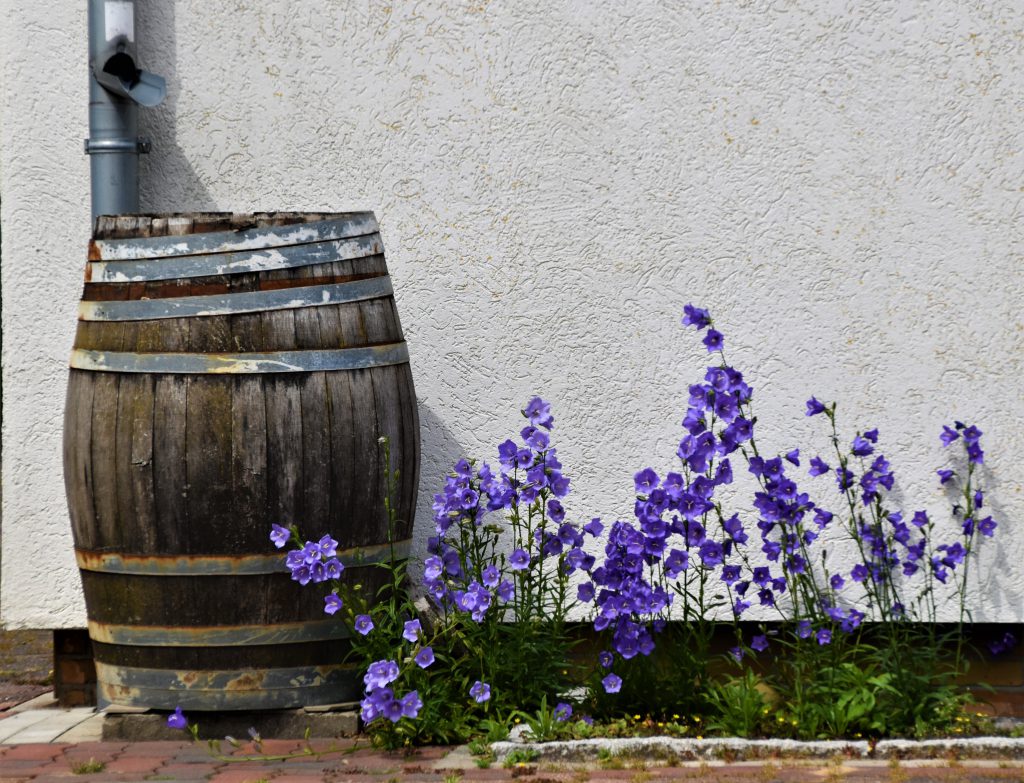Water Conservation
Introduction
Water is a life-giving and critical element in our ecosystem, and is increasingly a commodity as drought becomes more common. In addition to nourishing us, however, the flow of water can contribute to pollution as stormwater carries pollutants from surfaces into waterways.
With so much potential for pollution, we must take steps to decrease runoff from impermeable surfaces. There are a number of ways to do this in our homes and communities by using vegetation and natural designs.
These methods are collectively called green infrastructure, which are distinct from traditional concrete pipes, tanks, and treatment systems that are called gray infrastructure. Rain barrels, bio-swales, rain gardens, and permeable pavement are common examples of green infrastructure. In addition to reducing runoff pollution, such methods help us conserve and reuse water.
Rain Barrels
We can reduce runoff by collecting rainwater in rain barrels and using it to water plants or by simply letting it flow out and soak into the ground during drier conditions. Your local wastewater treatment facility or watershed association might sponsor rain barrel distribution programs.
Rain barrels are easy to set up and are gaining popularity for diverting runoff away from home foundations. They also provide a good water reuse system, because you can hook a hose up to the barrel to water your lawn and garden.

Bio-Swales and Rain Gardens

Another way to reduce water runoff is through landscaping. Two simple and common practices are bio-swales and rain gardens.
Bio-swales are depressions that allow water to collect and slowly soak into the ground. Rain gardens are also depressions that allow water to soak into the ground, but are landscaped with garden plants. Since they often appear to be ordinary gardens, rain gardens are an attractive addition to the landscape.
These landscaping options can be very simple or highly engineered, depending on the soil conditions that allow water to percolate into the ground and the slope of your property.
Permeable Paving
There are places where we need to have a hard surface that avoids muddy conditions. Impermeable pavement can be replaced by various options that still allow water to soak into the ground.
Permeable pavement may include special mixes of asphalt or concrete, or paving blocks, all with openings that allow water through and reduce runoff.
Reducing indoor water use
Indoor water conservation helps to prevent water pollution as well as protecting a finite natural resource. There are a number of devices that you can use, such as shower timers, as well as low-tech ways to use less water at home.
Read Eartheasy’s guide to reducing water usage for 45 tips.
Actions
- Learn how to set up a rain barrel
- Read this guide to setting up a rain garden from the Wisconsin Department of Natural Resources
- Consider replacing your asphalt or concrete driveway with paving blocks
- Take steps to reduce indoor water usage (find ideas here)